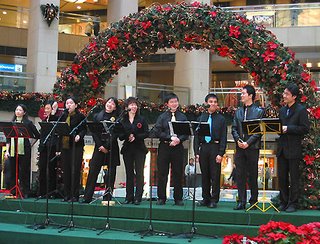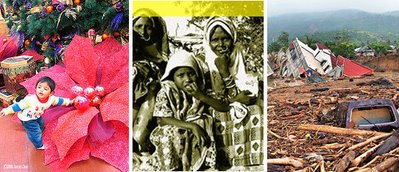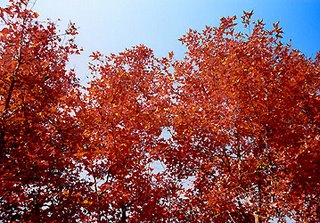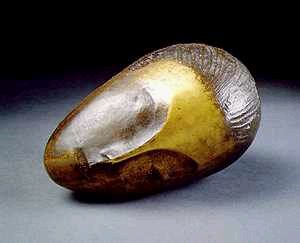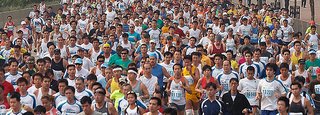 Running Through a Thousand years of History – Angkor Wat International Half-Marathon
Running Through a Thousand years of History – Angkor Wat International Half-MarathonAnthony and I became friends when we joined hiking activities together. However, the number of time we met on the running tracks was far more than that in the countryside, since he is an enthusiast of cross-country running as well as a good amateur half-marathon runner. During a hiking and camping trip in the Mainland in October, we were taking about an overseas half-marathon event being held in two month's time. I had been running for more than 4 years, and the only overseas event I had joined was the Beijing Marathon last year. But that was not the reason of my being interested in the event. What interested me was actually the venue – the nearly thousand-year-old Angkor Wat of Cambodia, world heritage site and one of the 7 wonders of the world. This is probably a once-a-lifetime event for many runners. I knew that a group of Hong Kong runners had planned to go, and Anthony was going to check out if I could join.
A month had passed but there was still no news. Since internet online registration was available, the plan was to wait until the air tickets were confirmed. However, seats for direct flights from Hong Kong to Siem Reap (where the Angkor Wat is located) were limited and ticket booking was rather complicated. In addition, the number of people going was ever changing (eventually there were only 4 going : Anthony, Brian the organizer, me and Kenneth). By the time the tickets were confirmed, the online registration was already closed. Thanks to hard work by Brian who organized this trip, we finally got a place in the participants' list.
The event was held on Sunday, the 17th of December. We were already in Siem Reap, the ancient capital of Cambodia, in the evening of the 15th, since there were direct flights only on Monday, Wednesday and Friday each week. We had spent a whole day sightseeing in the ancient ruins of the Angkor city on the next day, and checked out the route of the half-marathon at the same time. Our legs were actually exhausted by the end of the day, but the magic of the traditional Khmer massage had worked wonder on us. Early in the morning at 05:40 of the 17th, we left the hotel in the dark on a Tuk Tuk (3-wheel motor cycle commonly used in SE Asia for transportation), heading for the starting point of the event – Angkor Wat. The weather in December was rather pleasant in Cambodia : temperature at 23 degree Celsius in the morning, and relative humidity 50%, rather comfortable for running a half-marathon too.
Now in its 11th year, the Angkor Wat Half-marathon event was organized by the Japanese NGO “Heart of Gold” from the Okayama city of Japan, and joined by the Cambodian Olympic Committee. What was special about the event was the participation of many Cambodian landmine victims. The main aims were to increase the world's awareness of the landmine problems and the care of the victims. Most of the registration fees collected were used for the victims' rehabilitation and the HIV/AIDS Awareness Program for the young people in Cambodia. Arimori Yuko of Japan, the "Heart of Gold" ambassador as well as the Atlanta Olympic marathon medal holder, had also joined the race. The number of participants reached its highest this year, with 2,757 runners from 32 countries.
6:00 a.m., the starting point in front of the entrance causeway of Angkor Wat was packed with people. The half-marathon event started at 6:30, and w had to gather at the starting line before we could barely warm-up ourselves. There was no time-zone arrangement, and suddenly we found that we were standing at the first row with Arimori Yuko. I was too embarrassed to stay there and therefore moved aside, since I was such a slow runner and did not want to become an obstacle the others.
The starting gun was fired, and everyone sprinted forwards. The beautiful morning sun rose from behind the temple towers of the Angkor Wat at the same time, but hardly anyone had noticed that. The first 1km was along the moat of the Angkor Wat. I could see wild monkeys coming out from the wood and watching the runners passing by. The wheel chair group started 15 minutes after us, and they caught up with us as we were approaching the 2.5km turning-back point.
 I had not had any training since the last Nike 10K race as I had been sick for a while. Therefore I was not hoping for anything but completing the race in a relaxing way. The track was actually nearly prefect : flat, straight, asphalt-paved, densely wooded on both sides, with water station at every 2.5km, and the beautiful ancient temples and ruins scattered along the route. I was able to keep the pace of 5min/km on the first 10km. It was really enjoyable to run along the ancient wall, passing by the monumental ruins and temples of Prasat Kravan, Ta Keo, Banteay Kdei and Ta Prohmand. But the most enjoyable of all, was the cheering from the smiling village children who ran with us or stood on both sides of the road holding out their hands. I just slowed down and reach out to clap the hands of every child and "give them five". I was actually slowing down by doing so, but I did not mind at all, for that was such touching and enjoyable moment.
I had not had any training since the last Nike 10K race as I had been sick for a while. Therefore I was not hoping for anything but completing the race in a relaxing way. The track was actually nearly prefect : flat, straight, asphalt-paved, densely wooded on both sides, with water station at every 2.5km, and the beautiful ancient temples and ruins scattered along the route. I was able to keep the pace of 5min/km on the first 10km. It was really enjoyable to run along the ancient wall, passing by the monumental ruins and temples of Prasat Kravan, Ta Keo, Banteay Kdei and Ta Prohmand. But the most enjoyable of all, was the cheering from the smiling village children who ran with us or stood on both sides of the road holding out their hands. I just slowed down and reach out to clap the hands of every child and "give them five". I was actually slowing down by doing so, but I did not mind at all, for that was such touching and enjoyable moment.The route then passed through the monumental Victory Gate, entering the ancient royal city of Angkor Thom. It was just like meeting again some friends who I had just be acquainted with in the previous day : the 12 Towers, the Palace ruins, the Terrace of the Elephants, the Phimeanakas, and he Bayon Temple. As a result of the lack of training, I started to slow down further to a pace of 6min/km. "No pain, no gain". That was always true, especially for long distance running.
As I left Angkor Thom through the South Gate, I met with the crowd of tourists heading for the Angkor Thom. Cars lined up along the road, and I could see the tourist-carrying elephants rushing by along the path just beside the road. This was not something that I expected, but I could not blame anyone but myself - I was too slow. Most of the runners had already finished the race half an hour ago, and they certainly had not experienced such situation.
 The finishing point was actually right next to the starting point. The last 1km was also running along the moat of the Angkor Wat. I was rather surprised to see some Japanese ladies cheering me by giving me a "Ganbadei" as I was approaching the finishing line. They must have mistaken me as a Japanese runner. Well, why disappointing them? I responded by "giving them five". And there they were, Anthony, Brian and Kenneth, who had been waiting so long for me. Sorry about that, brothers.
The finishing point was actually right next to the starting point. The last 1km was also running along the moat of the Angkor Wat. I was rather surprised to see some Japanese ladies cheering me by giving me a "Ganbadei" as I was approaching the finishing line. They must have mistaken me as a Japanese runner. Well, why disappointing them? I responded by "giving them five". And there they were, Anthony, Brian and Kenneth, who had been waiting so long for me. Sorry about that, brothers.Anthony was very happy, since he had finished with a PB in spite of the exhausting sightseeing trip in previous day - the traditional Khmer massage did work! And me, finished with a PW as expected. But I did not mind at all. The important things was, I had had a most enjoyable race.
穿越千年的長跑 - 吳哥窟國際半馬拉松
與山友Anthony相識於山野之間,但經常碰面,卻是在長跑賽道上,皆因他熱愛越野跑運動之餘,也是業餘的半程馬拉松好手。十月份一次大陸登山野營活動中,閒聊時提及兩個月後的一項海外長跑賽事,即時引起了我的興趣。參與長跑運動已四年多,第一次參加海外的賽事,是一年前的北京國際馬拉松,也是唯一的一次,所以對海外的賽事,仍然有那種新鮮的感覺,不過最吸引的,還是今次的比賽地點--柬埔寨的世界遺產、世界七大奇蹟之一、有近千年歷史的吳哥窟。能在千年遺蹟中作賽,畢竟是十分難得的機會,得悉一班跑友將會組團赴柬參加,便立即託Anthony代為了解。
一個月過去了,依然沒有音訊,因為賽事可以在網上報名,所以打算在確定了機票之後才報名。香港和暹粒(吳哥窟所在地)的直航班機機位有限,訂票要比較轉接,亦由於人數的變動(最終成行的是4人-搞手Brian,Anthony,我及另一位山友、Anthony的越野跑拍檔Kenneth),機票遲遲未能確定,到機票訂妥時,賽事的網上報名已經截止了。幸好得搞手Brian的奔走,最後都可以成功報名。
半程馬拉松在12月17日舉行,因為每週只有星期一、三、五才有班機直航,我們在15日晚上已經到達了柬埔寨古都暹粒。16日趁空檔訪遊了吳哥王朝遺跡,順道視察了賽道,回來後雙腳竟然有點酸軟,幸好有高棉古法按摩的幫助,疲勞盡消。17日清晨5:40,天還未光,我們便乘坐預約好的嘟嘟車(Tuk Tuk,一種東南亞地區的三輪摩托車,暹粒的則由摩托車拖著一載客的兩輪拖卡)離開酒店,出發到吳哥窟。柬埔寨十二月份的氣候比較宜人,清晨氣溫攝氏23度,濕度百分之五十左右,進行長跑運動,算是十分舒服,我們乘著無遮無擋的Tuk Tuk在路上飛馳,還感覺有點冷呢,幸好帶上了風褸。
吳哥窟國際半程馬拉松,今年已經是第十一屆,由日本岡山市的非政府組織「金心」(Heart of Gold)發起,與柬埔寨奧委會共同舉辦。賽事特別之處,是參賽者中有很多是柬埔寨內戰時留下的地雷的受害者,賽事就是旨在向世人呼籲禁止地雷和關懷地雷受害者,收集的參賽費用,亦用來支援柬埔寨地雷受害者及開展青少年艾滋病預防活動。作為「金心」的愛心大使,日本奧運女子馬拉松獎牌運動員有森裕子亦有參賽。今年參賽人數為歷屆最多,共32個國家達2757人。
6時正到達了吳哥窟參道前的起點,那兒已經是人山人海,我們連熱身都未足,便要準備起步。半程馬拉松在6:30起步,因為起跑沒有定排位時區,陰錯陽差之下,我們4個都排到頭位去了,有幸和有森裕子並排起步,不過因為自己成績太差,不好意思阻礙其他跑手,便自動自覺地退到一邊,順便為Anthony他們拍起步照。
槍聲一響,大家紛紛越過起跑線,一輪紅日亦剛從吳哥窟後昇起,美極了,可惜大家都只顧向前衝,只有很少人留意到,發出一陣陣讚嘆聲。開首一段沿著護城河跑,林裡面的猴子都走出來了,坐在路邊草地看熱鬧。到了2.5公里轉回點,比我們遲15分鐘起步的輪椅組的健兒們都趕上來了,他們都是被地雷炸斷雙腿的柬埔寨人,坐著輪椅參加比賽。
自Nike十公里以後,因為身體不適,已有一個月完全沒有練過跑,所以今次是志在參與,打算只輕鬆完成便行了。那是一條近乎完美的賽道:全程平坦的柏油路、林蔭夾道、每2.5公里的水站,還有令人讚嘆的古跡不斷在眼前和兩邊出現。開首十公里,我還能保持5分鐘1公里的速度,沿著古老的城牆、經過荳蔻寺(Prasat Kravan) 和 塔高寺(Ta Keo)宏偉的遺跡、Banteay Kdei和塔普倫寺(Ta Prohm)莊嚴的大門,但最令人開心的,是沿途村莊的孩子們,他們或跟著跑一段,或站到路邊興奮地伸出手,用笑容鼓勵著參賽者,我亦放慢腳步,邊跑邊和站在路邊的孩子們擊掌。我是越跑越慢了,但卻完全不在乎,因為我很享受。
賽道接著穿過宏偉的勝利門(Victory Gate),進入了大吳哥城遺跡。城內的十二塔(Prasats Sour Prat)、皇宮遺址、象台、空中宮殿(Phimeanakas)、巴容寺(Bayon),都是昨天剛探訪完的古蹟,那是另一種感覺,猶如重見剛相識的朋友一般的感覺。跑步從來都是一分耕耘一分收獲的,疏於練習的結果,就是步速開始降至6分鐘1公里了。
因為跑得慢,由南門離開大吳哥城時,遊客們已開始湧進城了,路上大擺車龍,揹著遊客的大象在路旁穿梭。一面吸著廢氣,一面要留意避開路上的障礙,就如跑馬路一樣,有點不爽,不過都只能怪自己跑得慢,大部份的跑手都在半小時前衝線了,不會遇到這種情況。
終點就是起點的吳哥窟參道,臨衝線前一公里是沿著護城河跑,因為這一段是封了路,不用像之前般留心避車了。衝線前幾十公尺,竟然有幾位日本嬸嬸大聲為我「奸爸爹」,應該是錯把我當是同胞了(因為有很多日本人專程來參賽,香港跑手真是絕無僅有),不過我也照單全收,伸出手和她們擊掌。當然,還有在終點等我等到發呆的Anthony等眾人。
恭喜Anthony造出了他的PB(歷來最佳成績),前一天的奔波勞碌,仍可再創佳績,可能是與高棉古法按摩的神奇功效有關,哈哈。而我,就一如所料,造出了我的PW(歷來最差成績),不過不要緊,重要的是,這是我跑步以來最享受的一次半程馬拉松。
